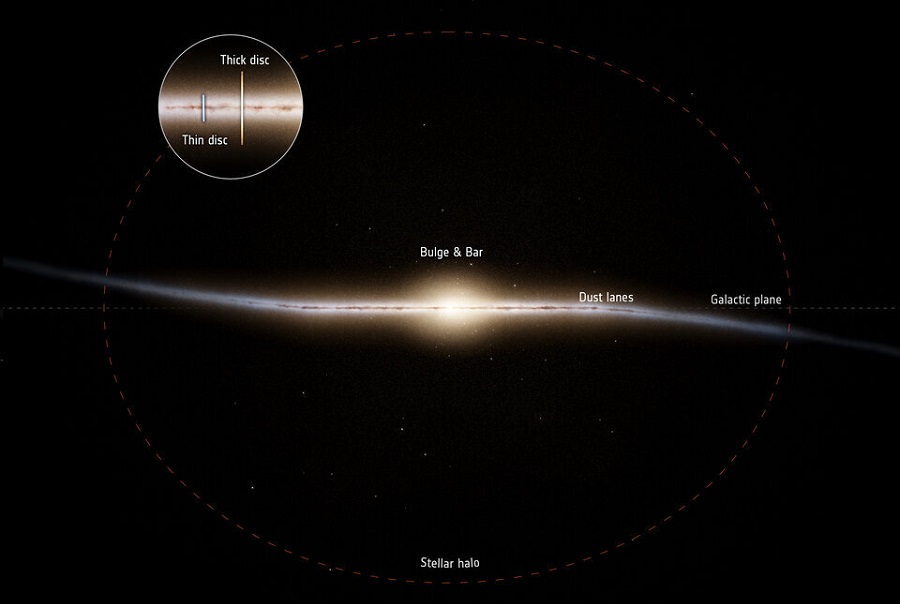Data from the Gaia Space Telescope indicate that a part of the Milky Way called the “Thick Disk” is much older than previously thought. Due to this scientists have revised their ideas about the evolution of the Galaxy.

Gaia indicates the age of the Thick Disk
Scientists working with the Gaia Space Telescope have recently reported the results of studies conducted with its help. They analyzed the characteristics of subgiant stars in different regions of the Galaxy. The results of these studies indicate that the region called the “Thick Disk” is much older than previously thought.
Scientists distinguish several main regions in the structure of the Milky Way. The first one is called “Halo”. This is a zone in which stars are quite rare, it surrounds all other components and is considered the oldest. It contains a disk inside, which subdivides into thin and thick.
The thin disk is considered the youngest of the Galaxy’s structures. The thick one is a little older, but still scientists were sure that it was formed several million years after the Big Bang. New research indicates that the period of its appearance is only 800 million years after the birth of the Universe.
New picture of the Galaxy’s evolution
Gaia’s research has provided a new perspective on the Galaxy’s evolution. It was held in two stages. First, about 800 million years after the Big Bang, the thick disk and the inner parts of the halo formed.
And about 2 billion years after the beginning of the Universe, a dwarf galaxy called Gaia-Sausage-Enceladus collided with our star system. It enriched the halo with stars, and the thick disk with gas. For a while, star formation processes actively continued in the latter, until about 6 billion years after the Big Bang, gas reserves ran out.
Around the same time a thin disk was formed, where our Sun is located. Since then, the main processes of star formation have been taking place in it. Although in older structures they have not stopped.
How the research is going
It is necessary to tell a little about how these results were obtained, stated in an article in the journal Nature. It is impossible to directly determine the age of the stars. Astronomers can only compare their mass, luminosity and chemical composition with models of stellar evolution. In this way it was found that the subgiants in the thick disk are very thick.
Gaia data on other galaxies also helps. Thousands of them are observed by this telescope, and scientists can find those of them that resemble the Milky Way several million years ago by redshift. Thus, we can look into our own past.
According to Рhys.org

